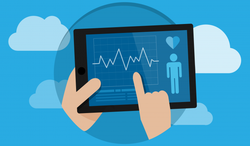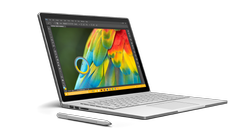Hardware Options for Your EHR System
To ensure compliance with HIPAA regulations when maintaining health records, the health providers must retain ease of access, legibility, and accuracy of medical data. Therefore, creating an efficient and reliable EHR system is crucial to navigating through patients' medical histories conveniently and securely.
EHR stands for "Electronic Health Record" and mainly consists of a data-sharing, network-connected, enterprise-wide information system with software and hardware components. The computer hardware component of an EHR should be the primary concern of a healthcare organization. It's essential that users can easily connect to the EHR system to access and input information. Here are three options for implementing a helpful EHR environment.
Desktops
The first option is to install desktop computers in one fixed location. The desktops will be hardwired and stationery. Many businesses continue to use desktops because they are inexpensive, easy to install and have a wide range of options for desktops. However, that does not mean that desktops are not without downsides. For example, they take up more space than laptops and often require additional equipment to enable potentially essential programs such as voice or handwriting recognition applications. In addition, because desktops are stationary, one must be installed in every room to access the EHR software.
Laptops
The second option is to use laptops as a portable alternative to desktops. Laptops give staff more flexibility and allow an easy connection to wireless connections. However, a disadvantage of laptops is that many can be heavy and unwieldy. In addition, laptop repairs can cost much more than desktops and may have to be sent to an off-site shop to fix. We particularly like the Microsoft Surface Books due to their unique ability to be in a sterile area if your healthcare application calls for being inside a sterile environment.
Tablets
The third option, laptops, offer even more mobility than laptops. Although smaller, a good tablet can be as powerful as desktops and laptops. Using tablets, users can move from room to room much more efficiently, and using a digital pen/stylus to write on a tablet can help staff input information into the EHR easily. However, similar to the previous two options, tablets also have disadvantages. Staff will have to adapt to writing with a stylus; even then, handwriting programs that convert to text can have faults. Additionally, touch screens are prone to scratches and are often fragile enough to break after one drop.
An Electronic Health Records system can provide enormous benefits to your organization: easier data entry, quicker data recall, and improved data accuracy. This system's backbone is a good hardware network, so consider your options carefully when setting up your EHR system.


